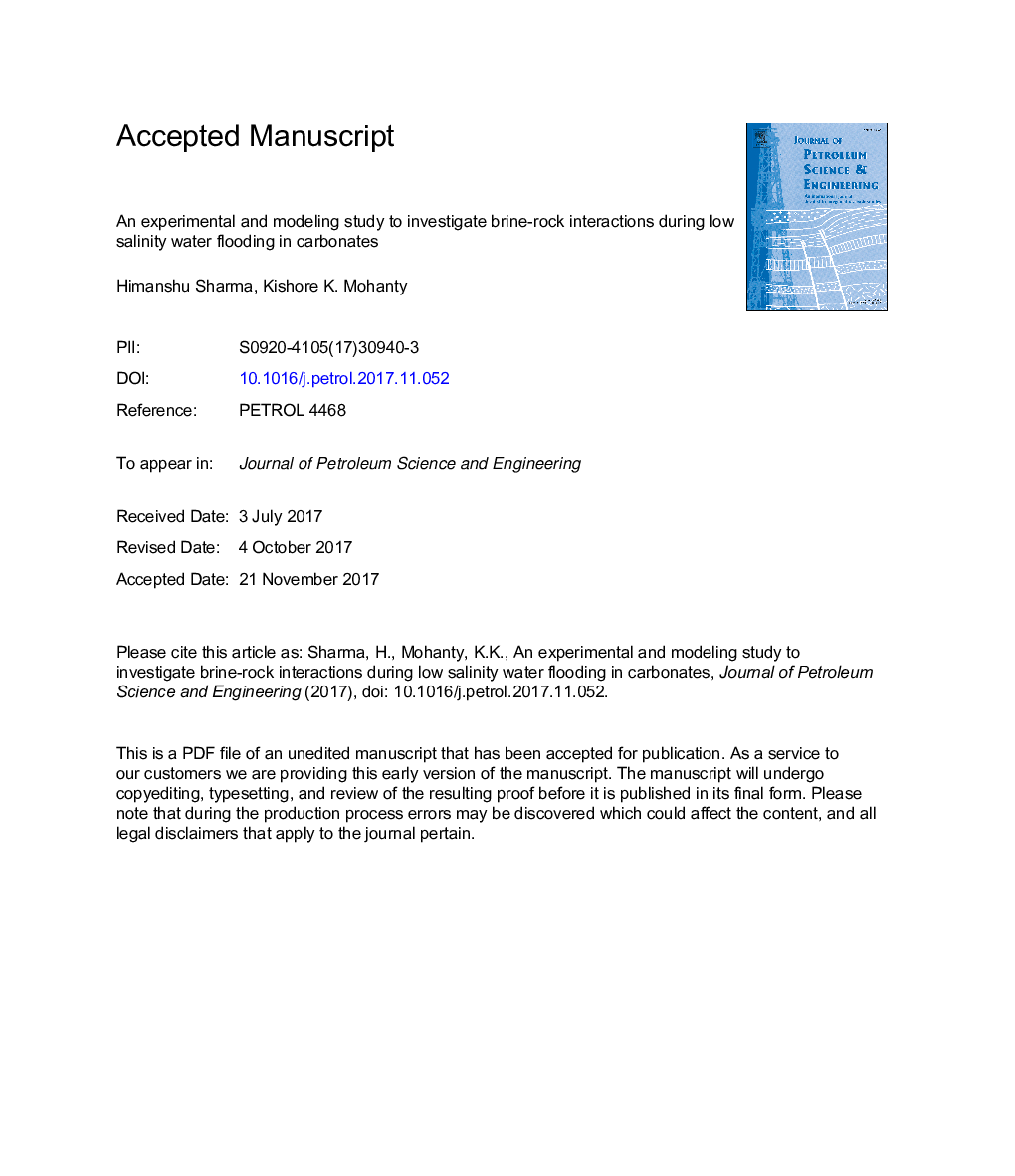| کد مقاله | کد نشریه | سال انتشار | مقاله انگلیسی | نسخه تمام متن |
|---|---|---|---|---|
| 8125214 | 1522776 | 2018 | 50 صفحه PDF | دانلود رایگان |
عنوان انگلیسی مقاله ISI
An experimental and modeling study to investigate brine-rock interactions during low salinity water flooding in carbonates
ترجمه فارسی عنوان
یک مطالعه تجربی و مدلسازی برای بررسی تعاملات شور - سنگ در طویل شدن آب شور با آب شور در کربنات ها
دانلود مقاله + سفارش ترجمه
دانلود مقاله ISI انگلیسی
رایگان برای ایرانیان
کلمات کلیدی
موضوعات مرتبط
مهندسی و علوم پایه
علوم زمین و سیارات
زمین شناسی اقتصادی
چکیده انگلیسی
Injection of brines with carefully designed ionic compositions into oil-wet carbonate rocks at high temperatures has shown to alter their wettability towards a water-wet state and improve oil recovery. Various mechanisms have been postulated for this wettability alteration such as mineral dissolution and interaction of potential determining ions, such as Ca2+, Mg2+ and SO42â, with the carbonate surface. In this study, experimental and modeling work was performed to gain further insights into the geochemical interactions between carbonate rocks and modified brines. Single-phase static (equilibrium) and transport experiments were performed with various brines in limestone cores at 120 °C. The ionic compositions of the effluent samples were monitored using ion chromatography. A mechanistic model for the wettability alteration process was developed in UTCHEM-IPHREEQC based on key geochemical interactions. The calcite surface was assumed to consist of positive and negative sites and their interactions with potential determining ions were considered assuming local equilibrium. The model assumed the degree of oil-wetness to depend on the amount of organic acid attached on the surface, which in-turn was dependent on the geochemistry of the system. Results of static experiments performed with crushed limestones and brines showed an increase in calcium concentration and a decrease in magnesium concentration in the supernatant brines. The effluent concentrations from single-phase brine corefloods in limestone cores showed an increase in calcium concentration, a decrease in magnesium concentration and a delay in sulfate concentration. Three key geochemical interactions were identified based on these results: mineral dissolution, surface dolomitization and sulfate adsorption. A good qualitative agreement was observed between single-phase experiments and simulations, suggesting that the model was able to accurately capture the geochemistry. The simulation results showed good agreement with zeta potential and oil recovery results reported in the literature.
ناشر
Database: Elsevier - ScienceDirect (ساینس دایرکت)
Journal: Journal of Petroleum Science and Engineering - Volume 165, June 2018, Pages 1021-1039
Journal: Journal of Petroleum Science and Engineering - Volume 165, June 2018, Pages 1021-1039
نویسندگان
Himanshu Sharma, Kishore K. Mohanty,
